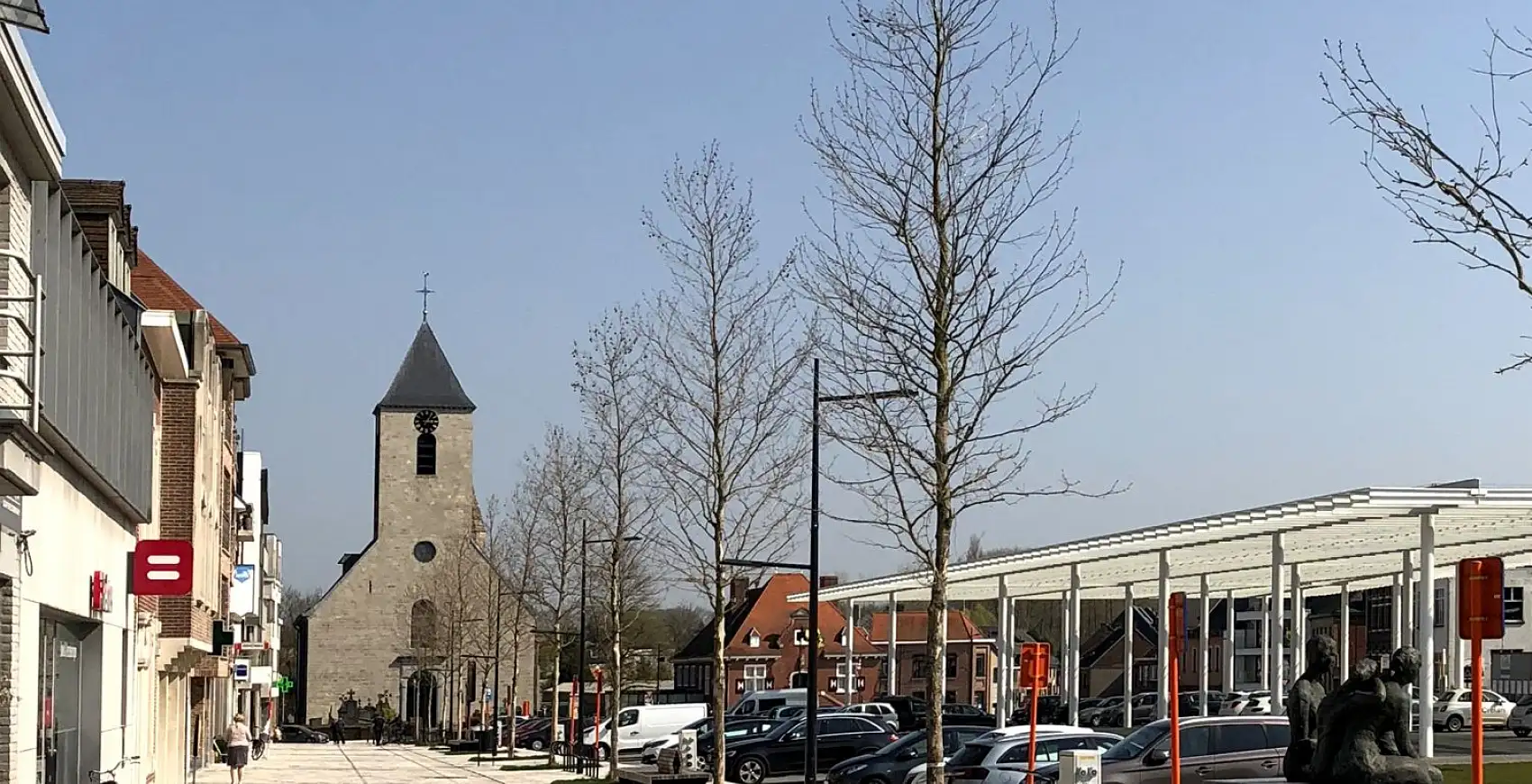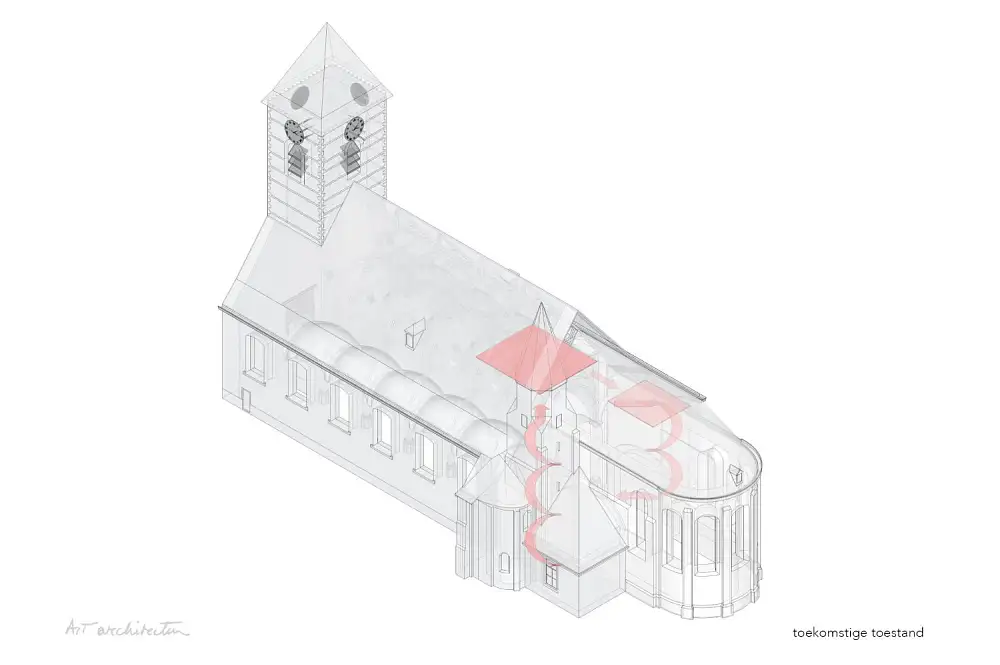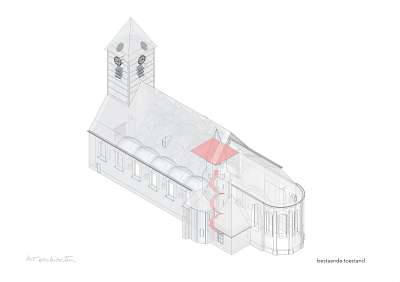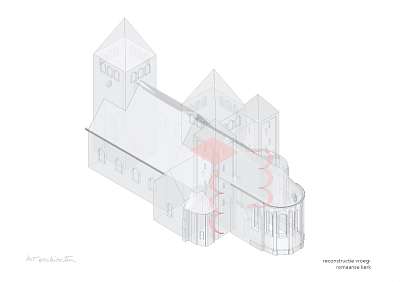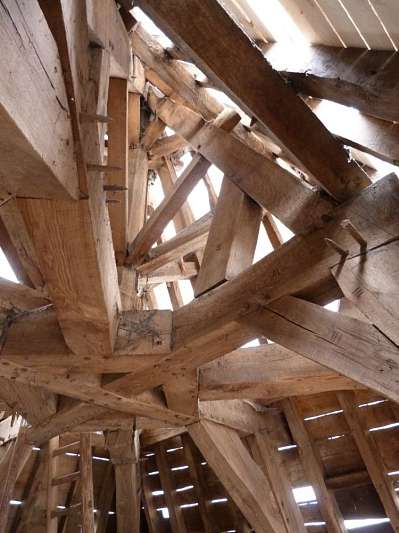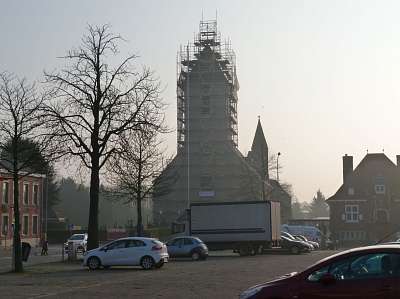At first glance, the Saint Michael’s Church in Sint-Lievens-Houtem appears to be an ordinary 18th-century parish church, designed as a hall with two side aisles, a western tower, and an eastern choir. However, the church has Carolingian origins, still visible in the two flanking crossing towers that bear witness to this early period.
The most fascinating elements are barely visible, hidden in the junction between the choir and the nave. Archaeological evidence of the Carolingian origin includes the underground remains of the westwork and the transepts. The shrine containing the relics of Saint Livinus is now kept in the recently restored southern stair tower, which features Gothic wall paintings in chapels that once opened onto the side aisles but are now concealed behind Baroque altars.
There is also a ‘forgotten’ northern stair tower, currently used for storage, which contains equally valuable Gothic wall paintings. By modifying the roof plane and making the choir roof accessible, a museum-like circulation is created, making the restoration and consolidation of the northern tower’s murals meaningful.
A hexagonal skylight in the roof refers to the lost northern Gothic spire, identical to the preserved southern one. This elevated window provides a viewpoint and channels natural light into the darker spaces, transforming them into places of contemplation. Restoration becomes most meaningful when layers can be added, altered, or revealed.
Note: The myth of Saint Livinus also refers to the parish of Sint-Lievens-Esse. For this reason, we also reference the adaptive reuse of the convent in Sint-Lievens-Esse, where the courtyard was transformed into a theater in celebration of the Livinus tradition.

